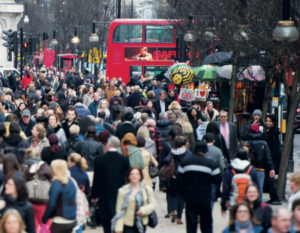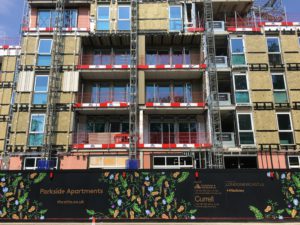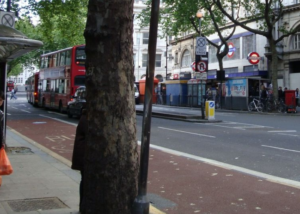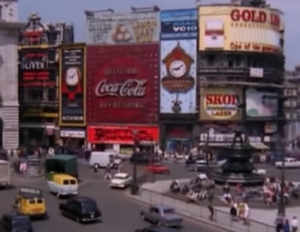Politics is a bit different in Tower Hamlets. Its electoral scene is incomprehensible without knowing some recent local political history and difficult to grasp even then. Before we start looking at the two wards where by-elections were held last week, we should review the last few turbulent years across the borough.
The borough is one of the four in London that has directly elected Mayors. The introduction of the mayoral system led to major ructions in 2010. Lutfur Rahman, who been a Labour leader of the council, was denied nomination by the party’s national executive committee, but stood as an independent and won. He organised his allies into a local political party called Tower Hamlets First and was re-elected with a group of 18 THF councillors in 2014.
However, his triumph was short-lived as the mayoral election was declared void by an election court in April 2015, Rahman was banned from standing again for five years and THF was forced to disband. A re-run election was won by Labour’s John Biggs.
The councillors who had been elected as members of THF split into two groups, both of which contested the 2018 borough elections – the larger faction as Aspire and the smaller faction as People’s Alliance of Tower Hamlets (PATH). But Labour demolished both sets of THF successors, winning 42 seats out of 45 and defeating all the Aspire councillors and all but one PATH candidate: party leader Rabina Khan, who held on in Shadwell ward. PATH was disbanded in summer 2018, with Khan and many of its activists joining the Liberal Democrats.
But despite losing all their council representation, the post-THF parties retained the loyalty of a significant section of the Tower Hamlets electorate. Depending on how you measure it, 27-29 per cent of voters supported Aspire or PATH in 2018 and many of Labour’s majorities were the larger due to the splintering of opposition votes between Aspire, PATH and others. Tower Hamlets politics is local and personal above all else, and in all-out borough elections there are often big differences between the votes cast for candidates of the same party. By-elections can therefore be wild rides that lead to interesting places.
This brings us to the two by-elections of Thursday 7 February 2019, held in the wards of Shadwell and Lansbury. The Shadwell election arose from the resignation of Labour councillor Ruhul Amin, citing personal reasons. The other vacancy was due to the departure of Labour councillor Muhammed Harun, who stood down following allegations of fraud, which he denies.
Shadwell ward is a small, well defined pocket of the East End, covering a stretch of several parallel routes eastwards out of the City – Commercial Road, the Docklands Light Railway, Cable Street and The Highway. It contains Watney Market, an East End landmark which was subject to a well-intentioned but disastrous redevelopment in the 1970s, and several older council-built estates. Fifty-four per cent of the population lives in social housing, and there is 22 per cent overcrowding level. There are also high levels of unemployment (16 per cent) and other economic inactivity arising from long term illness and family caring responsibilities and also the presence of some students.
Shadwell is the most Muslim ward in Tower Hamlets and its population is 52 per cent of Bangladeshi origin. It can be summed up as a mostly Bangladeshi community facing some serious social, economic and environmental challenges. The fact that the DLR line above Shadwell carries some of the highest-earning workers in London shuttling between meetings in the City and Canary Wharf symbolises the collision of wealth and poverty in contemporary London.
The Shadwell campaign was somewhat shambolic. The Liberal Democrat candidate Abjol Miah is a well-travelled figure in Tower Hamlets party politics. He has previously won in Shadwell as a Respect candidate in 2006, won St Peter’s ward for THF in 2014 and fought that seat for PATH in 2018, before accompanying Rabina Khan into the Lib Dems. But he was disowned by his party shortly before election day after it was revealed that in 2014 he had shared antisemitic videos produced by notorious American racist David Duke. The Labour candidate, Asik Rahman, also had to apologise for social media posts suggesting that he approved of extreme Islamist preachers. The Aspire candidate, Harun Miah, had represented Shadwell as a Respect and THF councillor until 2018 and was well-known in the ward.
Four other candidates stood in this keenly-fought election, which Aspire won with 1,012 votes to 914 for Labour and 484 for the disaffiliated Lib Dem. Shadwell was probably the most difficult ward in Tower Hamlets for Labour to defend. Their successful candidate in 2018 had finished a clear second behind Rabina Khan and Harun Miah was clearly going to be competitive. Talking of swing is probably futile in the circumstances, but what seems to have happened is that the PATH vote split evenly between Aspire and the Lib Dems leaving Aspire just ahead of Labour.
The election in Lansbury ward was less wayward, though only in Tower Hamlets could a Labour hold against a local Left/Islamic machine politics party be regarded as routine. Lansbury, like Shadwell, is a poor area dominated by social housing with a large community of Bangladeshi origin. It has the highest unemployment rate in Tower Hamlets (19 per cent in 2011) and the largest proportion of residents with no educational qualifications (26 per cent).
The ward lies north of East India Dock Road. The main district centre is along Chrisp Street and it contains the DLR station of Langdon Park. It takes its name from the Lansbury Estate, a post-war housing development that hosted an architectural exhibition as part of the Festival of Britain in 1951 and which in turn takes its name from former local MP and Labour leader George Lansbury. Not all the Lansbury Estate is in the ward. The ward also includes a small area to the east of the Blackwall Tunnel approach road, which has recently been given a property-developer makeover and dubbed “Aberfeldy Village”. There are some new blocks of flats in that area.
Lansbury, as it should be given its name, is stronger Labour territory than Shadwell, although THF won a seat in 2014 and the Lib Dems won a seat in the predecessor ward in 2006 and 2010. Aspire were 14 points behind in the 2018 election and needed to sweep up the entire PATH share of the vote plus a little bit more to win Lansbury, a steeper hill to climb than in Shadwell. They did not make it, and Labour’s Rajib Ahmed held the seat with a majority of 306 (1,308 votes to 1,002) over Aspire candidate Ohid Ahmed, formerly Lutfur Rahman’s deputy.
A hopeful sign from the elections was the success of the administrative arrangements. As in May 2018, there was a substantial police presence throughout, with the aim of preventing electoral fraud and abuse of the sort that marred the elections here in 2014, and it appears to have been successful. The turnout in Shadwell was relatively high (35 per cent) which might have raised eyebrows in the Tower Hamlets of old. In Lansbury it was was poor (26.5 per cent). Again in contrast to the shambles that took place at the count in 2014, the results were counted quickly and cleanly and declared in time for election buffs to get a good night’s sleep. There is not a lot that can be read from the results, other than that there has not been much of a shift in opinion on local matters since the full borough elections last May, and neither of the outcomes can be seen as indicators of political trends elsewhere.









